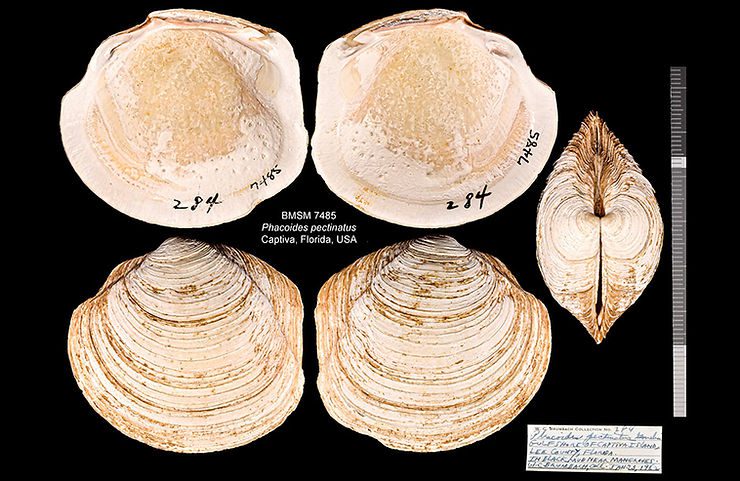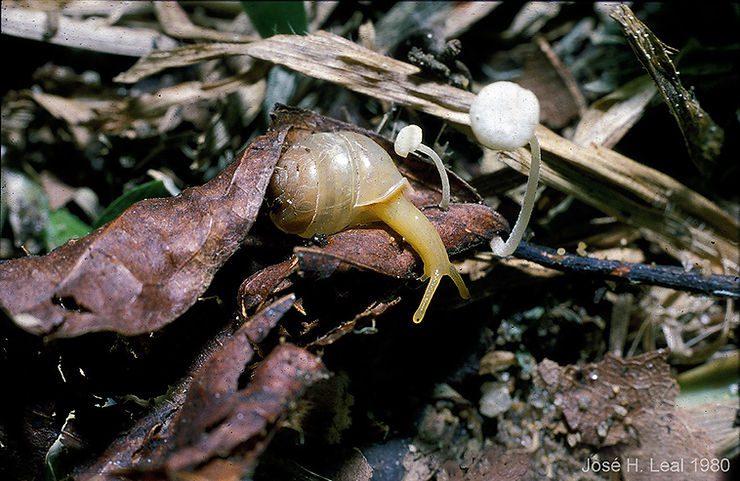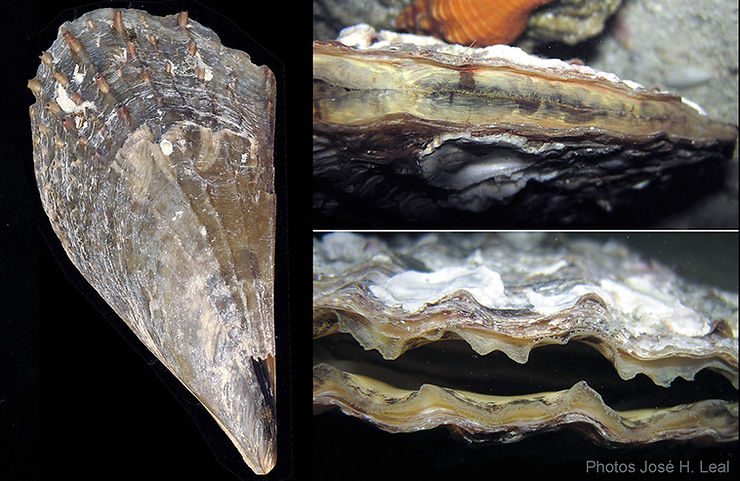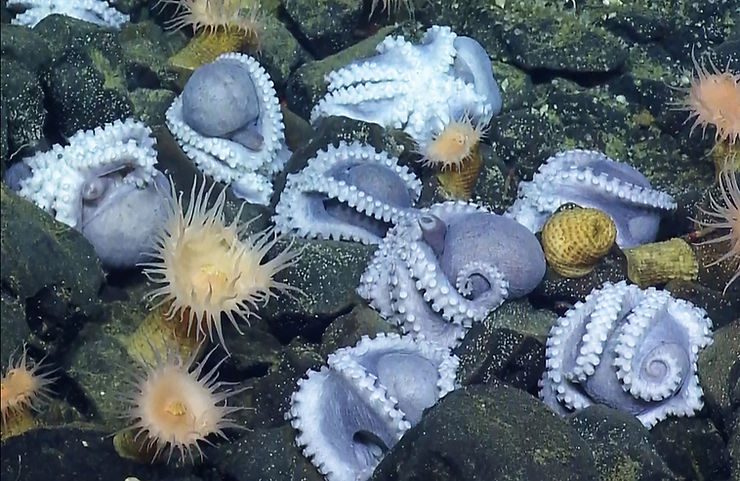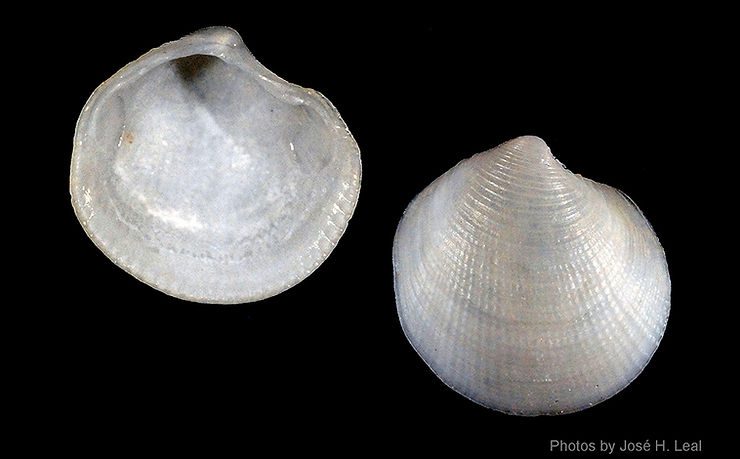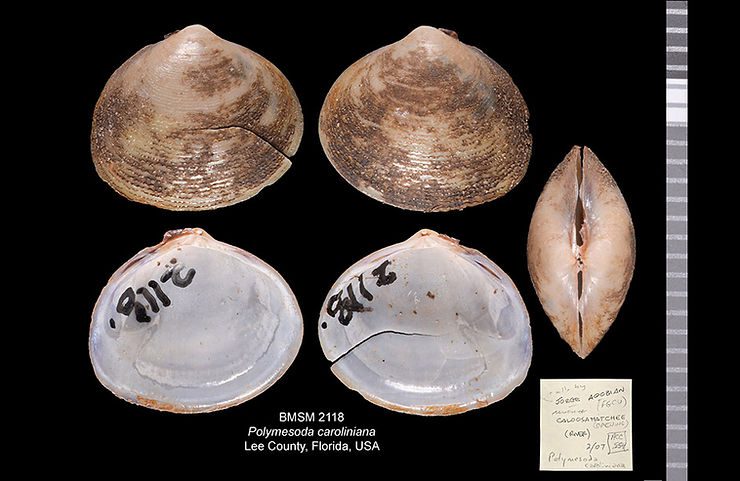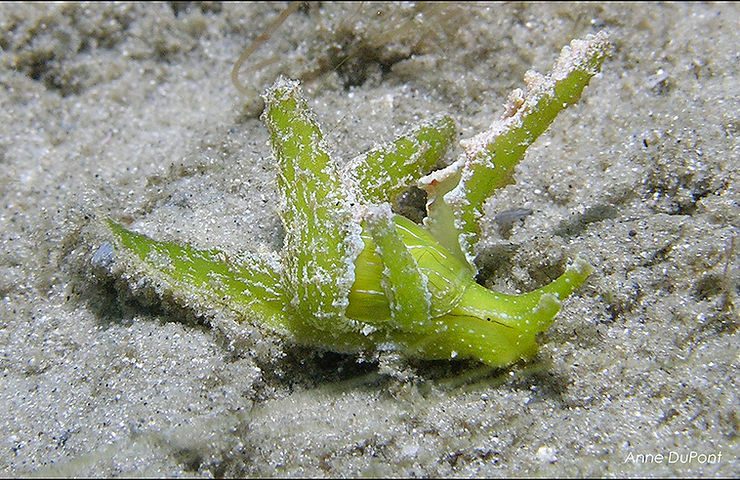
Shell of the Week: The Elusive Souverbie Lobiger
The Souverbie Lobiger, Lobiger souverbii P. Fischer, 1857, is a sea slug that reaches about 15 mm (0.6 inch) in length. Its cap-like, translucent shell (below) is very thin, covers only the central-dorsal part of the animal, and is flanked by the four parapodial lobes typical of the genus Lobiger. Most likely, the lobes act to increase the apparent size of the animal. That, combined with production of a sticky substance, probably acts to intimidate potential predators. Living Souverbie Lobigers
